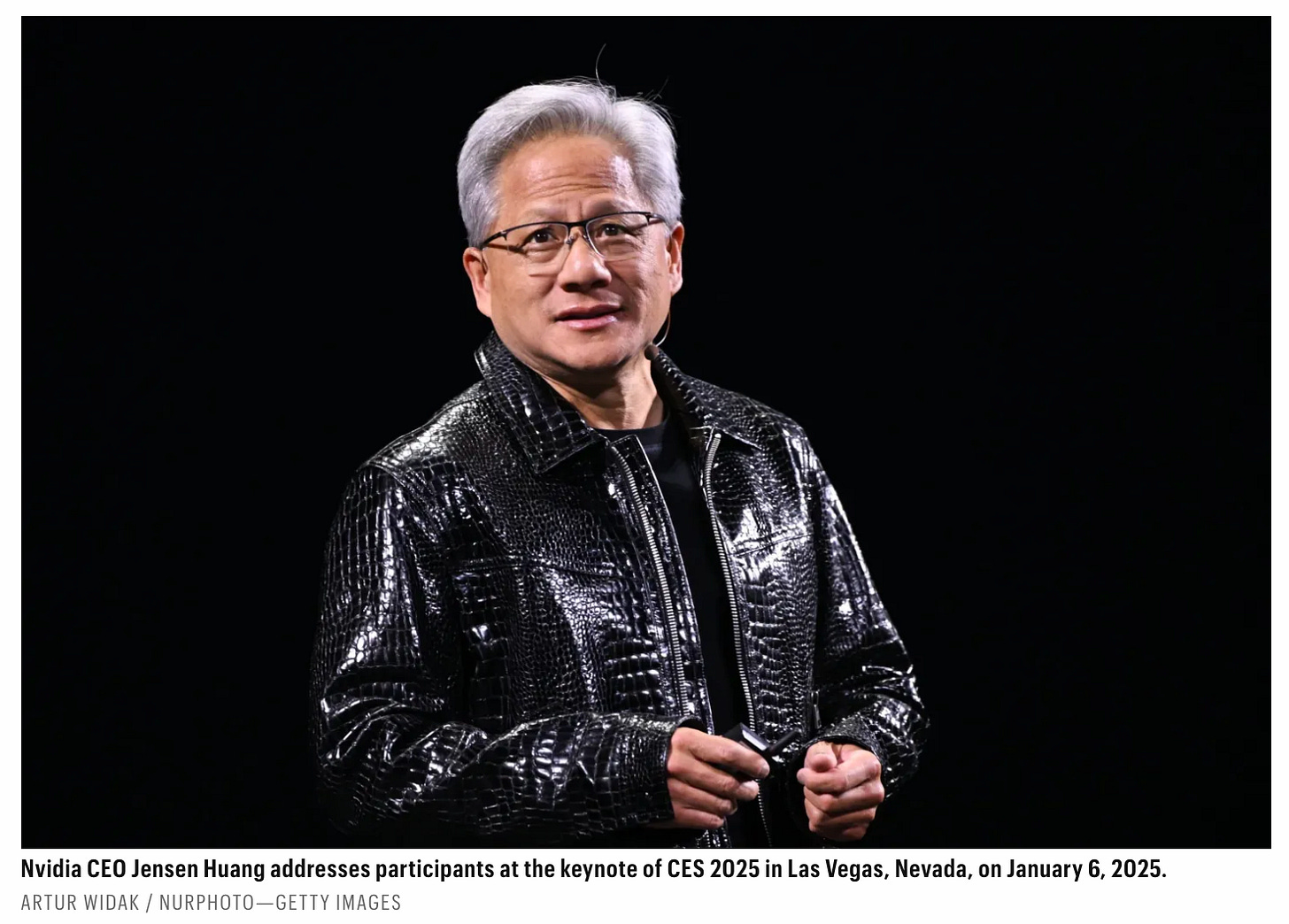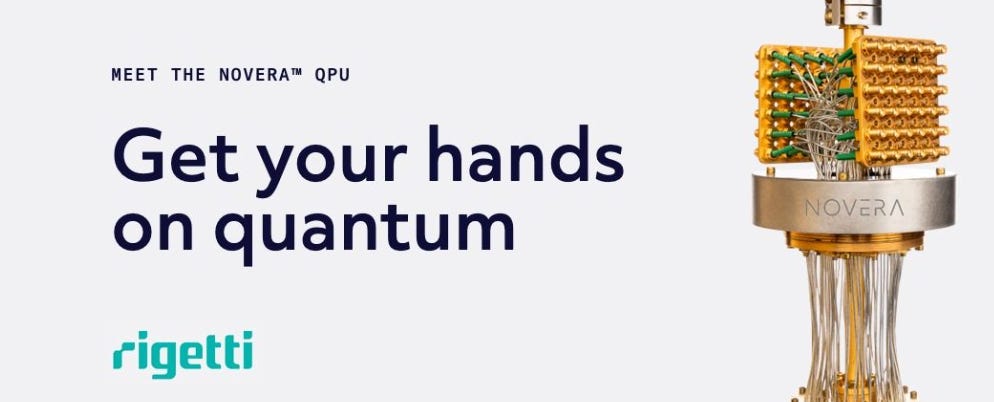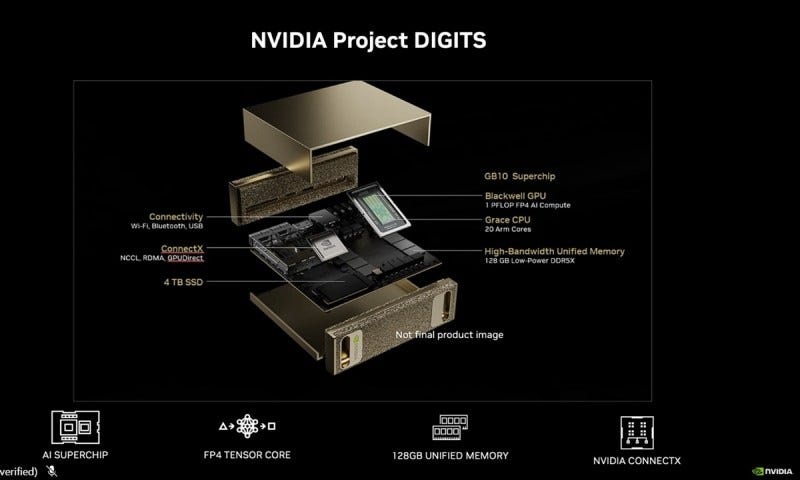Diving Into the Quantum Computing Rabbit Hole
The more I dive into the world of quantum computing, the more I realize how transformative and elusive this field really is. Over the past few months, I’ve been going down the quantum rabbit hole, learning, questioning, and trying to untangle the hype from the reality. It’s a journey filled with promise, complexity, and a fair amount of skepticism. And then came NVIDIA CEO Jensen Huang’s recent comment that "very useful quantum computers" are still 15 to 30 years away. Was it a moment of realism, or was there something else driving his words? (Self Serving?)
And then, of course, there’s Google’s announcement of Willow, their state-of-the-art quantum chip. It’s not just another incremental improvement. Willow achieved something groundbreaking: reducing errors exponentially as qubits scale, a problem that has stymied the industry for decades. Willow’s ability to perform a computation in under five minutes that would take a supercomputer 10 septillion years is staggering. Announcements like these reignite belief in the field’s potential and invite us to question whether we are closer to practical quantum computing than skeptics like Huang suggest.
What Makes Quantum Computing Different
Quantum computing isn’t just another shiny tech concept. It’s fundamentally different from anything we’ve seen before. Instead of classical bits that are either 0 or 1, quantum computers use qubits, which can exist in a state of superposition, both 0 and 1 at the same time. This, combined with entanglement, where qubits influence each other no matter how far apart they are, gives quantum systems their incredible computational power. Imagine solving problems that would take classical computers billions of years in just minutes. That’s the potential we’re talking about.
Key features of quantum computing:
Superposition: Qubits exist in multiple states simultaneously, enabling parallel computations.
Entanglement: Qubits are interconnected, so the state of one can affect another, even over long distances.
Exponential Speed: Certain problems, like optimization or cryptography, could see exponential improvements in computational time.
What Is Quantum Supremacy
Quantum supremacy is a term that defines the moment when a quantum computer can solve a problem that is practically impossible for classical computers to achieve in a reasonable timeframe. This milestone is often seen as the first proof that quantum computing can outperform classical systems in certain tasks. Google first claimed quantum supremacy in 2019 with its Sycamore processor, which solved a specific problem in 200 seconds that would take a supercomputer thousands of years. Willow, however, takes this a step further. By demonstrating exponential error reduction and achieving "beyond classical" performance with real-time corrections, Willow showcases quantum supremacy not as a theoretical milestone but as a practical leap toward large-scale applications. This positions Willow as a defining moment, proving that quantum computing can scale effectively without collapsing under the weight of errors.
The Role of Error Correction
Error correction is one of the biggest hurdles in quantum computing and a cornerstone of its future success. Unlike classical computers, where errors are rare and predictable, quantum systems are incredibly fragile. Qubits are highly sensitive to their environment, leading to frequent errors that can rapidly cascade and ruin computations. Quantum error correction involves using multiple physical qubits to create a single logical qubit that is more stable and less prone to errors. The challenge has always been scaling this process while reducing the overhead required to maintain stability.
This is where Google’s Willow chip shines. By demonstrating exponential error reduction with increased qubits, Willow represents a breakthrough in making large-scale quantum computing feasible. It’s a step toward creating logical qubits that can support practical applications, moving the field closer to solving real-world problems.
Promise vs. Practicality
But as I’ve dug deeper, it’s clear that potential is not the same as practicality. Right now, quantum computing feels like we’re building skyscrapers with blueprints drawn on napkins.
Companies like IBM, Google, and startups like IonQ and Rigetti are racing to achieve quantum supremacy, the point where a quantum computer can solve a problem no classical computer could. Google’s announcement of Willow highlights the progress being made. Not only does Willow scale error correction exponentially, but it also demonstrates "beyond classical" performance, achieving results no supercomputer can match. Yet, even these advancements often feel like moonshots - impressive but not immediately useful.
Practical Applications of Quantum Computing
While much of the current focus in quantum computing revolves around benchmarks and proof-of-concept achievements, the real promise lies in its potential applications. Quantum computing is expected to revolutionize fields like:
Drug Discovery: By simulating molecular interactions at an atomic level, quantum computers could accelerate the discovery of new medications.
Energy Optimization: Quantum systems can model and optimize energy grids, paving the way for more efficient and sustainable power systems.
Financial Modeling: Banks and investment firms could use quantum algorithms to manage risk, optimize portfolios, and detect fraud more effectively.
Artificial Intelligence: Quantum computing could significantly improve machine learning models by solving complex optimization problems that are currently computationally prohibitive.
These applications are still in the future, but the roadmap becomes clearer with advancements like Google’s Willow chip and similar breakthroughs.
The NVIDIA Question
That’s where Huang’s comments hit me. He’s right about the challenges. Scaling qubits without introducing massive error rates is a monumental task. Error correction itself is a problem so complex that it could fill an entire industry. But there’s another layer to his statement. NVIDIA has built its empire as the backbone of AI and high-performance computing. Quantum chips could disrupt that dominance, potentially shifting the landscape in ways that even Huang can’t fully control. Was he tempering expectations to protect NVIDIA’s position, or does he genuinely believe we’re decades away? Maybe it’s both.
Market Reactions and Stock Volatility
And the market reacted. Stocks like IonQ (NYSE: IONQ) and Rigetti Computing (NASDAQ: RGTI) dropped by over 40% after Huang’s remarks. These companies have ridden waves of optimism, with investors betting big on quantum breakthroughs. Meanwhile, Google’s announcement of Willow injected fresh optimism, reminding us that progress, while incremental, is happening. Even D-Wave (NYSE: QBTS), which focuses on quantum annealing for optimization problems, faces significant hurdles in scaling its technology for broader applications. Quantum Computing Inc. (NASDAQ: QUBT) has taken an ambitious approach, bridging quantum and classical computing, but it too operates in a space where speculative bets often outweigh tangible results.
Parallels with AI’s Rise
Quantum computing is drawing comparisons to the rise of AI, but the parallels are nuanced. AI has seen rapid adoption across industries due to its scalability and immediate applications. NVIDIA’s Project DIGITS, powered by its Grace Blackwell AI Superchips, exemplifies how high-performance computing hardware has enabled AI to flourish. DIGITS places a petaflop of AI power on a desktop, allowing developers to prototype and train massive models locally before deploying them to the cloud. This rapid scalability, supported by existing software stacks and infrastructure, has driven AI’s explosion in practical applications.
Quantum computing, however, operates in a fundamentally different domain. Hardware like Google’s Willow chip faces challenges such as error correction, coherence, and fragility that make scalability far more complex. Unlike GPUs, which evolved through gaming and AI workloads, quantum systems are starting from a place of foundational science. Quantum breakthroughs like Willow’s exponential error reduction and “beyond classical” performance are crucial steps, but the field lacks the immediate practicality that propelled AI forward.
Where AI found real-world applications in natural language processing, image recognition, and recommendation systems, quantum computing’s early adopters are likely to emerge in niche fields such as:
Optimization: Solving logistics and resource allocation problems.
Cryptography: Revolutionizing encryption methods.
Material Science: Accelerating the discovery of new materials and chemicals.
While AI hardware like DIGITS benefits from existing infrastructure and software ecosystems, quantum computing must build both hardware and software stacks from the ground up. The trajectories may overlap in ambition, but quantum computing’s path is defined by solving scientific challenges before commercialization can truly begin.
The Long-Term Play
But let’s not ignore the stock market frenzy. Quantum computing’s promise has inflated valuations, often beyond what the technology can deliver today. Companies like Google (NASDAQ: GOOGL) and IBM (NYSE: IBM) can afford to play the long game. They have diversified portfolios that won’t collapse if quantum doesn’t pan out soon. Startups, however, face a different reality. Their survival depends on:
Keeping the hype alive to secure funding.
Proving relevance through incremental breakthroughs.
Managing the balance between speculative growth and tangible results.
Where Does This Leave Us?
So, where does that leave us? I’ve come to see quantum computing as a long-term play. It’s not the next big thing, not yet. But its potential is too massive to ignore. Whether Huang’s comments were rooted in realism or strategic caution, they reflect the tension in an industry that’s both exhilarating and frustrating. Google’s Willow chip demonstrates how breakthroughs can reignite optimism and move the field forward. Quantum computing is a revolution in the making, but revolutions take time. And as much as I’ve learned, the one thing I’m sure of is that the journey is just getting started.





